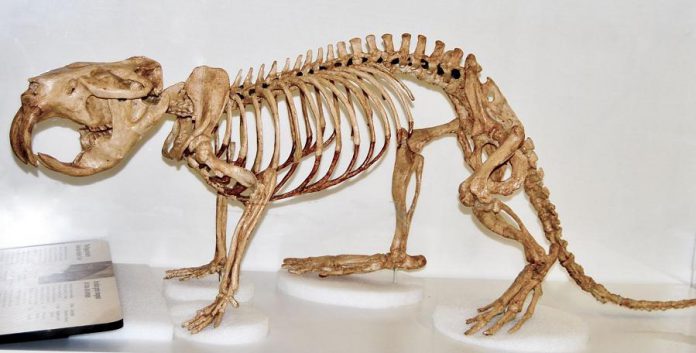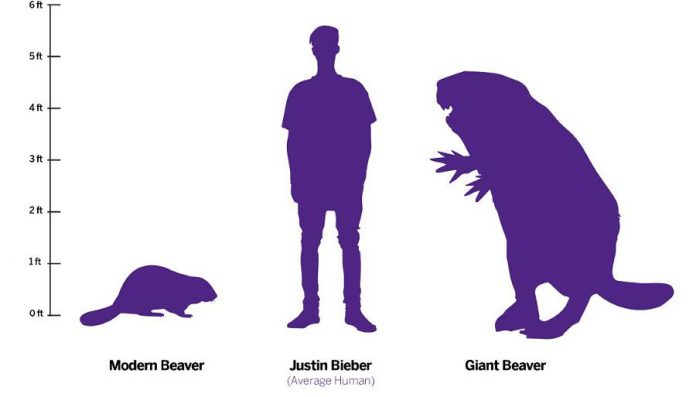
Scotland has the Loch Ness monster, the Pacific Northwest has Sasquatch, and now the Kawarthas has — the Giant Beaver?
Over the past few weeks, some residents of the Kawarthas have reported seeing a bear-sized animal with huge teeth and a long tail, emerging from the water of local lakes as the winter ice breaks up.
“At first I thought it was a small black bear that fell through the ice, until I saw those huge incisors,” says Jose Broma, who lives on Jack Lake near Apsley and reported the first sighting.
Broma, who says he was too busy running away to take a photo, then told his next-door neighbour about his experience. That’s when he discovered his neighbour had also had a close encounter with the same animal.
“She didn’t want to tell anybody because she was afraid they’d think she was crazy,” Broma says. “She was kind of relieved to find out I saw it too.”
The two of them then created a Facebook group, which now has more than 200 members from across the Kawarthas who all claim to have seen a similar creature. The Facebook group includes several photos of a large animal, but all of them are out of focus.

A biologist with the Ministry of Natural Resources and Forestry before he retired, Broma firmly believes the animal is actually a descendant of the prehistoric giant beaver (Castoroides), a huge rodent that roamed North America more than 10,000 years ago during the last ice age, along with the mastodon and giant sloth.
All these large animals, known as megafauna, went extinct during the Pleistocene–Holocene transition period. Scientists continue to debate whether the animals were killed off by climate change or by the Clovis people, who colonized North America around 13,000 years ago.
Paleontologists have found giant beaver bones and teeth from Ohio to southern Ontario to the Yukon Territory. References to the giant beaver can be found in the oral history of various Indigenous peoples in North America, some of whom may even have used giant beaver teeth as wood chiselling tools.
The largest rodent in North America at the time, the giant beaver was about two metres long and weighed up to 100 kilograms, with 15-centimetre-long incisors and a tail up to 64 centimetres long.
There have never been any previous reported sightings of an animal resembling the giant beaver in North America, let alone in the Kawarthas.
Broma has his own theory why the sightings have only happened in the last few weeks.

“I think it’s because of COVID,” Broma explains. “I’ve read in the news that lots of wildlife around the world has been coming out of the forests and jungles. Maybe the giant beaver thinks it’s finally safe to come out of the water now because there aren’t so many people around.”
kawarthaNOW emailed scientists at several Ontario universities for comment on this story, but only received a single response.
“This has got to be an April Fool’s joke, right?” the email said.
All images from this story come from actual research on the giant beaver at Western University in London, Ontario. A May 2019 study uncovered a possible reason why the giant beaver went extinct at the end of the last ice age (spoiler: unlike the modern beaver, the giant beaver didn’t eat wood).


























